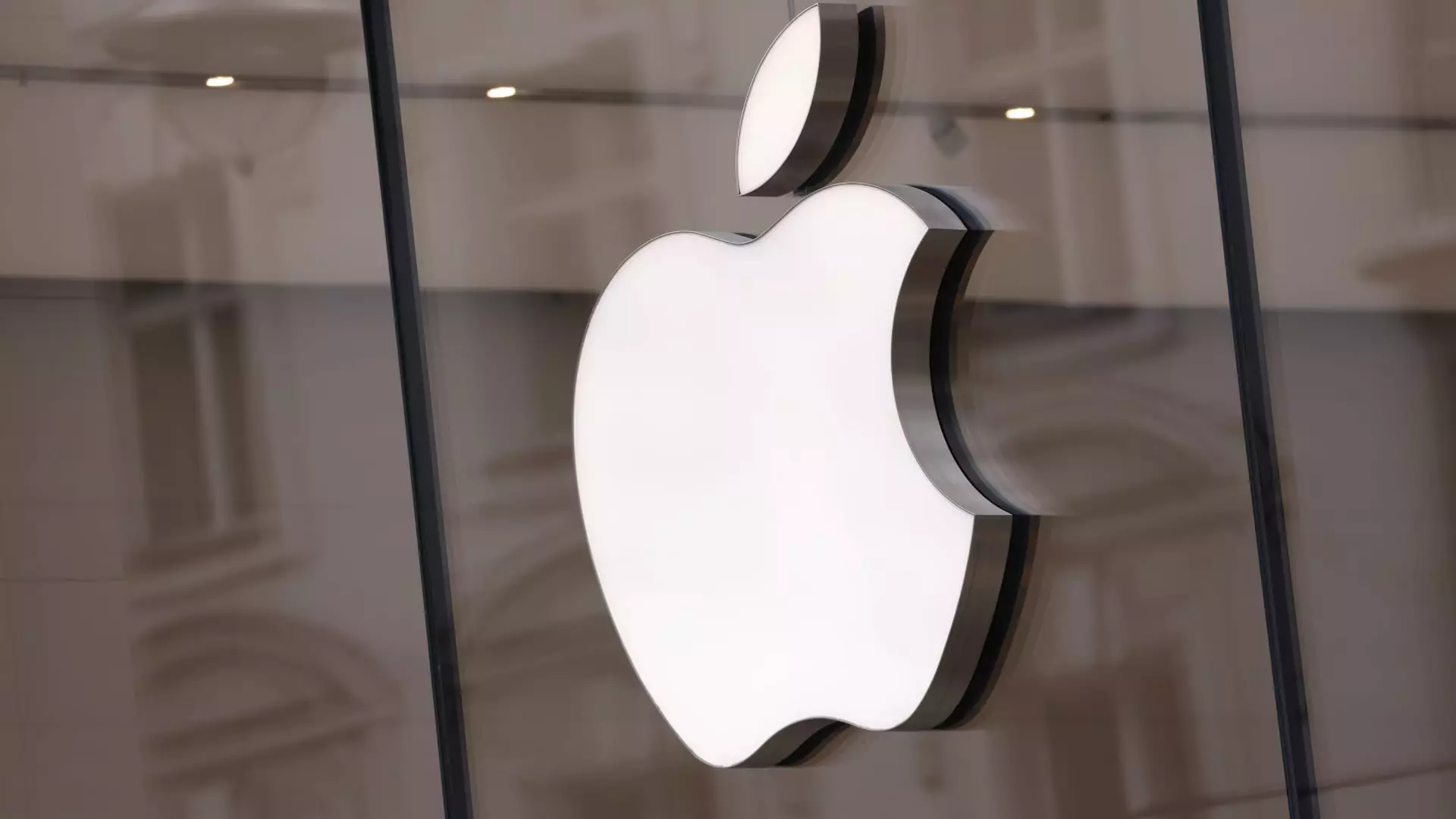Recent midday trading paints a fascinating but troubling portrait of the market. Technology stocks, which have been the lifeblood of growth in the U.S. economy, have experienced unexpected gains. The apparent resurgence stems primarily from investor optimism surrounding potential tariff agreements between the U.S. and other countries. Notably, companies like Apple, Nvidia, and Tesla have shown notable increases in stock prices, signaling investors’ willingness to overlook Apple’s past 20% decline related to its exposure to the volatile Chinese market.
However, such rises should be scrutinized through a more critical lens. Is this a genuine recovery, or merely a rally based on unrealistic expectations? While Apple’s increase of over 3% might give a sense of solace to investors, the underlying issues — such as reliance on Chinese markets and looming geopolitical tensions — cannot just dissipate in light of positive trading days. The tech sector thrives on consistent performance and stability, and even a modest downturn in foreign relations could re-establish downward pressure on prices.
Health Sector Booms: Is This Real Growth?
The healthcare sector is experiencing a notable surge, particularly stocks like UnitedHealth and Humana, which climbed significantly after a favorable ruling from the Centers for Medicare and Medicaid Services. UnitedHealth rose by 6.7%, and Humana spiked 10.8%. This spike reflects apparent confidence in Medicare Advantage plans, yet it raises questions about sustainability.
We can’t ignore that the government spending on health initiatives often comes with strings attached, such as expanded regulations or increased scrutiny. While investors cheer these developments, a critical look reveals the potential pitfalls: healthcare spending is susceptible to political winds. As budget concerns loom large, especially for a government concerned with addressing its colossal debt, the current exuberance may appear misplaced when the realities of fiscal responsibility set in.
The Banking Sector: Upgrades or Overhype?
Wells Fargo is another standout performer, with a nearly 4% gain following an upgrade from Piper Sandler. Despite the positive sentiments surrounding banks like Wells Fargo and Charles Schwab, it is imperative to ask if this uptrend is warranted. Piper Sandler contends that Wells Fargo’s stock is “appropriately capturing the company’s improving fortunes,” yet one must question which fortunes are being discussed.
The banking industry remains fraught with challenges, including low-interest rates, regulatory pressures, and credit risks. While current prices may seem justifiable, a prolonged economic downturn could reveal vulnerabilities that the recent euphoria is blind to. A thorough investigation of underlying fundamentals versus speculative fervor is warranted; otherwise, investors could be lured into a mirage of profitability.
Defense and Industry: Are We in a Bubble?
Defense stocks have also surged, sparked by President Trump’s promise of a $1 trillion defense budget. Lockheed Martin shares recently jumped 4%, situating it amid broader enthusiasm for defense spending. Yet, this raises the question of whether we’re entering a military-industrial bubble. Inflated budgets, while creating immediate investment excitement, could set us up for longer-term repercussions if the geopolitical climate shifts or if defense spending is challenged in the political arena.
A historical perspective is needed here. Many nations have faced backlash over prolonged military expenditures that ultimately strained economies. The temporary spikes could induce a feeling of security for investors, yet beneath that façade lies the risk of volatile reversals that could happen as sentiments towards defense spending evolve.
The Fall of Non-Traditional Firms: Reality Strikes
Meanwhile, firms like Janover and Tilray Brands reveal the darker shades of this trading day. Janover plummeted over 31%, while Tilray crumbled by more than 11% after disappointing earnings reports. These declines starkly contrast with the prevailing optimism, indicating that underneath the surface-level euphoria, significant peril exists in sectors still struggling for stability.
The high volatility of non-traditional markets like cryptocurrency and cannabis dramatizes this sentiment. Janover’s foray into a crypto treasury strategy does little to placate investors once strict adherence to numbers becomes imperative. The lesson here? Speculative investing leads to bubbles that burst, often leaving behind wreckage for those lacking the foresight to look beyond day-to-day gains.
Within these themes flows the ever-present reality: while optimism has its place in investing, one cannot afford to succumb to it without analytical scrutiny. As the market ebbs and flows, vigilance will be the key to avoiding potential pitfalls in a landscape rife with unpredictability.

